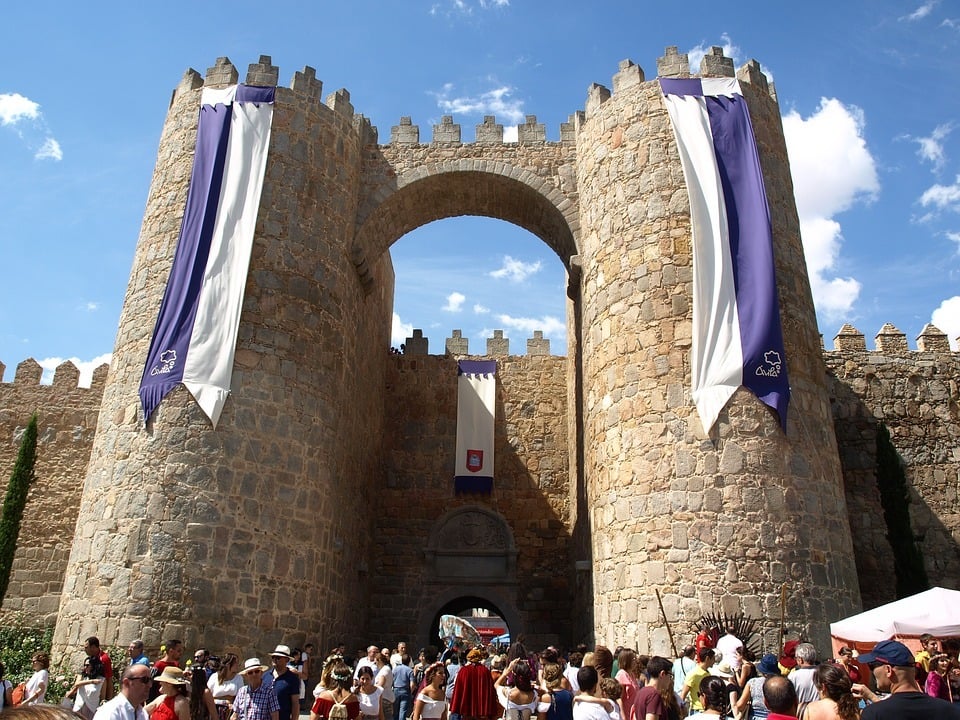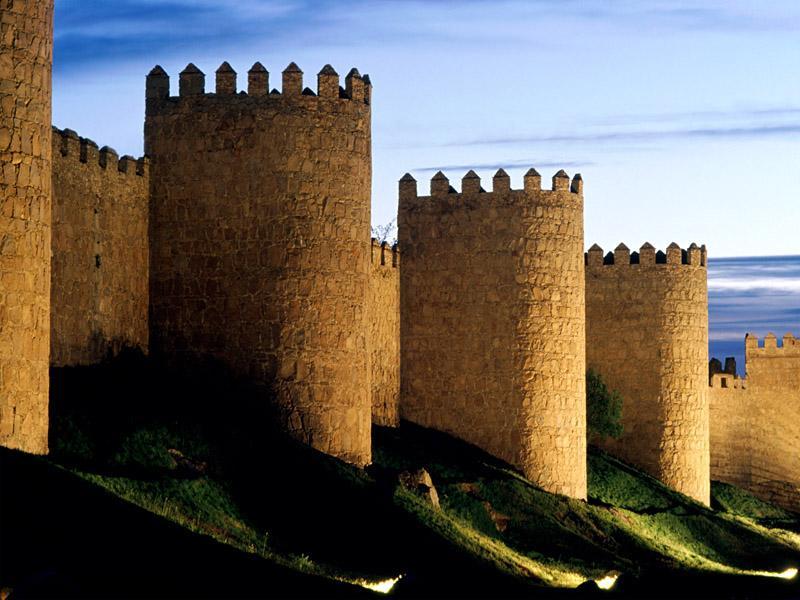Avila, Spain: A Medieval Masterpiece – Top Things to Do in the City of Walls
Avila, a UNESCO World Heritage city nestled in the heart of Spain’s Castile and León region, is a captivating destination that effortlessly transports visitors back to the Middle Ages. Famed for its remarkably preserved medieval walls, Avila offers a unique blend of history, culture, and culinary delights. Beyond the iconic fortifications, a wealth of churches, convents, palaces, and breathtaking viewpoints await exploration. Whether you’re a history buff, a foodie, or simply seeking a charming escape, Avila promises an unforgettable experience.
Here’s a curated list of the top things to do in Avila, ensuring you make the most of your visit to this walled wonder:
1. Marvel at the Walls of Avila (Las Murallas de Ávila):
No trip to Avila is complete without immersing yourself in the grandeur of its walls. These formidable ramparts, stretching over 2.5 kilometers and punctuated by 87 towers and nine gates, are the city’s defining feature. Built primarily between the 11th and 14th centuries, they served as a crucial defense against invaders and a symbol of Avila’s power.
- Walk the Walls: The most immersive way to experience the walls is to walk along their accessible sections. You can enter at several points, most notably near the Puerta del Alcázar (Alcazar Gate) and the Puerta de la Catedral (Cathedral Gate). The views from atop the walls are simply breathtaking, offering panoramic vistas of the city, the surrounding countryside, and the snow-capped Sierra de Gredos mountains in the distance. Be prepared for steps and uneven surfaces, but the effort is richly rewarded.
- Puerta del Alcázar: This is arguably the most iconic gate, featuring two imposing towers that frame the entrance. Its architecture showcases the strength and defensive capabilities of the walls.
- Puerta de San Vicente: Another significant gate, offering a slightly different perspective and often less crowded than the Puerta del Alcázar.
- Best Viewing Spots: For stunning photographs of the walls, head to the Mirador de los Cuatro Postes (Viewpoint of the Four Posts) just outside the city. This iconic viewpoint offers the quintessential Avila postcard shot, especially beautiful at sunset.
2. Explore the Avila Cathedral (Catedral de Ávila):
Integrated directly into the city walls, the Avila Cathedral is a unique architectural marvel. Officially known as the Cathedral of Christ the Saviour, it’s a blend of Romanesque and Gothic styles, reflecting its construction over several centuries.
- Exterior: Admire the cathedral’s imposing facade, particularly its granite exterior and the fortified apse that seamlessly blends into the city walls. Notice the intricate details of the portals and the gargoyles that adorn the structure.
- Interior: Step inside to discover a vast and awe-inspiring interior. The soaring vaults, stained-glass windows, and ornate chapels create a sense of grandeur. Don’t miss the alabaster tomb of Bishop Alonso de Madrigal, known as "El Tostado," a masterpiece of Spanish Renaissance sculpture.
- The Choir: The intricately carved wooden choir stalls are another highlight, showcasing scenes from the Old and New Testaments.
- The Museum: The cathedral museum houses a collection of religious art, including paintings, sculptures, and liturgical objects.
3. Visit the Basilica of San Vicente:
Dedicated to Saint Vincent of Avila, a martyr who died in the 4th century, this Romanesque basilica is a significant religious and historical site. Located just outside the city walls, it features stunning architecture and houses the saint’s tomb.
- Architecture: The basilica is a prime example of Romanesque architecture, with its massive stone walls, rounded arches, and intricate carvings. Pay attention to the detailed sculptures on the western facade, depicting scenes from the life of Saint Vincent.
- The Crypt: Descend into the crypt to see the tomb of Saint Vincent and his sisters, Sabina and Cristeta. The crypt is a peaceful and atmospheric space, a place for reflection and reverence.
- The Gardens: The surrounding gardens offer a tranquil setting to admire the basilica from different angles and enjoy the peaceful atmosphere.
4. Discover the Convent of Saint Teresa (Convento de Santa Teresa):
Avila is the birthplace of Saint Teresa of Avila, a renowned Carmelite nun, mystic, and writer. This convent, built on the site of her birth, is a place of pilgrimage and a significant historical landmark.
- The Church: The church within the convent is a beautiful example of Baroque architecture.
- The Museum: The museum houses artifacts related to Saint Teresa’s life and writings, offering insights into her spirituality and her impact on the Catholic Church.
- The Cell: Visit the reconstructed cell where Saint Teresa was born, a small and humble space that offers a glimpse into her early life.
5. Stroll Through the Jewish Quarter (Juderia):
Explore the narrow, winding streets of Avila’s former Jewish Quarter, located within the city walls. This historic neighborhood offers a glimpse into the city’s multicultural past.
- Architecture: Wander through the labyrinthine streets and admire the traditional architecture, characterized by narrow houses, cobbled streets, and hidden courtyards.
- Synagogue Remains: While the original synagogue no longer exists, you can find plaques and markers indicating its former location and learn about the Jewish community that once thrived in Avila.
- Casa de las Carnicerías: This building, once the site of the Jewish butcher shops, now houses the municipal archives.
6. Indulge in Avila’s Gastronomy:
Avila’s culinary scene is a delightful reflection of the region’s rich agricultural heritage.
- Chuletón de Ávila: This thick-cut, grilled steak is a must-try for meat lovers. The beef is locally sourced and known for its exceptional flavor and tenderness.
- Judías del Barco: These large, white beans, traditionally cooked with chorizo and other meats, are a hearty and flavorful dish.
- Yemas de San Teresa: These sweet, yolk-based candies are an Avila specialty and a perfect treat to satisfy your sweet tooth.
- Wine: Sample local wines from the Castile and León region, such as Ribera del Duero or Rueda.
- Restaurants: Explore the restaurants and tapas bars in the city center, particularly around the Plaza Mayor and the streets leading off it. Look for traditional "mesones" for an authentic dining experience.
7. Visit the Royal Monastery of Santo Tomás:
This monastery, located just outside the city walls, was founded by the Catholic Monarchs, Ferdinand and Isabella. It’s a magnificent complex with stunning architecture and a rich history.
- Architecture: Admire the monastery’s Gothic-Renaissance architecture, characterized by its impressive facade, cloisters, and courtyards.
- The Tomb of Prince John: The monastery houses the elaborate tomb of Prince John, the only son of Ferdinand and Isabella, who died at a young age.
- The Museum of Oriental Art: The monastery also houses a museum with a fascinating collection of art from the Far East, acquired by Dominican missionaries.
8. Relax in the Plaza Mayor:
Avila’s Plaza Mayor, the main square, is a vibrant hub of activity. Lined with cafes, restaurants, and shops, it’s a perfect place to relax, people-watch, and soak up the atmosphere of the city.
- Architecture: Admire the square’s historic buildings, including the Town Hall and the Church of San Juan Bautista.
- Events: The Plaza Mayor often hosts events, festivals, and markets, adding to its lively atmosphere.
9. Hike in the Sierra de Gredos:
For nature lovers, a day trip to the nearby Sierra de Gredos mountains is a must. This stunning mountain range offers breathtaking scenery, hiking trails, and opportunities for outdoor activities.
- Hiking: Explore the numerous hiking trails that wind through the mountains, offering stunning views of the valleys, lakes, and peaks.
- Photography: Capture the beauty of the landscapes, from the snow-capped peaks to the lush green valleys.
10. Visit the Mirador de los Cuatro Postes at Different Times:
As mentioned earlier, this viewpoint is a must-see. But try to visit it at different times of the day. Sunrise and sunset offer particularly spectacular light on the walls and the city. The change in light transforms the view and provides unique photographic opportunities.
Tips for Visiting Avila:
- Best Time to Visit: Spring and autumn offer pleasant weather for exploring Avila. Summer can be hot, while winter can be cold and snowy.
- Getting Around: Avila is a walkable city, especially within the walls. However, comfortable shoes are recommended.
- Accommodation: Avila offers a range of accommodation options, from budget-friendly hostels to luxurious hotels.
- Language: Spanish is the official language. While some people in tourist areas may speak English, it’s helpful to learn a few basic Spanish phrases.
Avila is a city that captivates with its medieval charm, rich history, and delicious cuisine. By exploring its iconic walls, historic churches, and vibrant culture, you’ll discover a destination that truly stands apart. So, plan your trip to Avila and prepare to be transported back in time!


